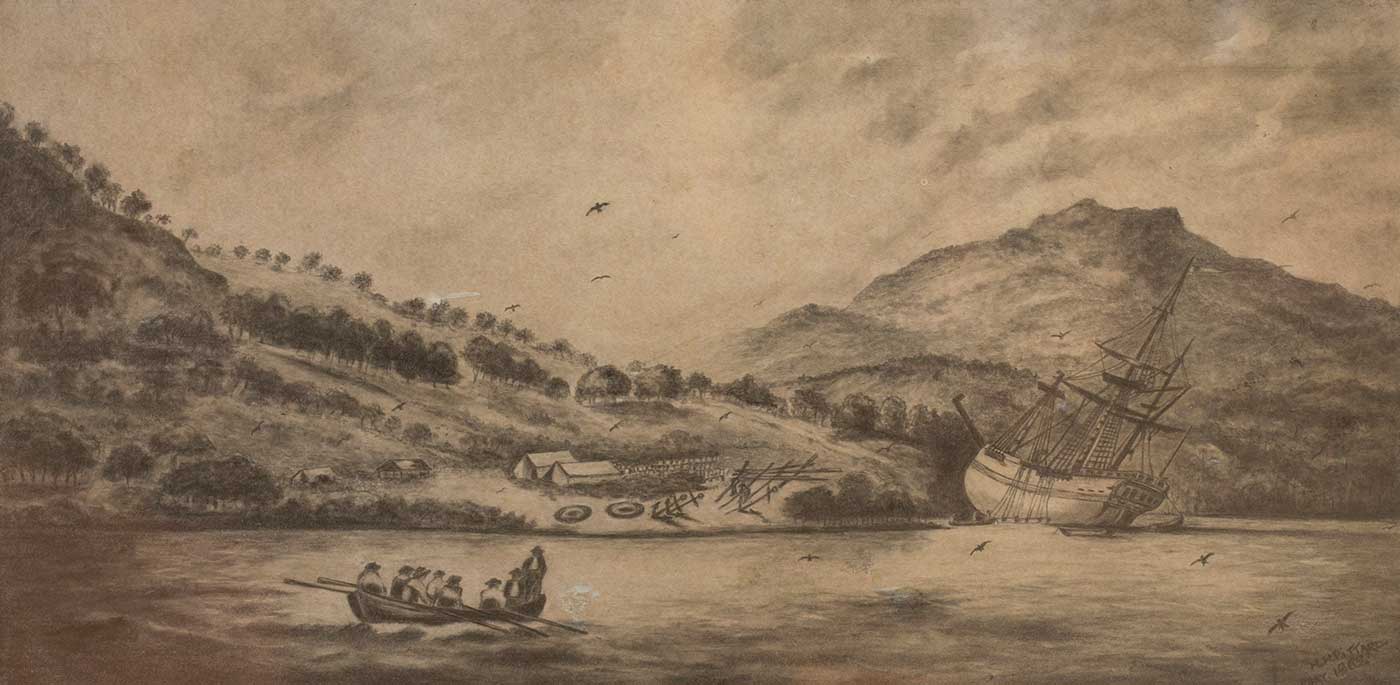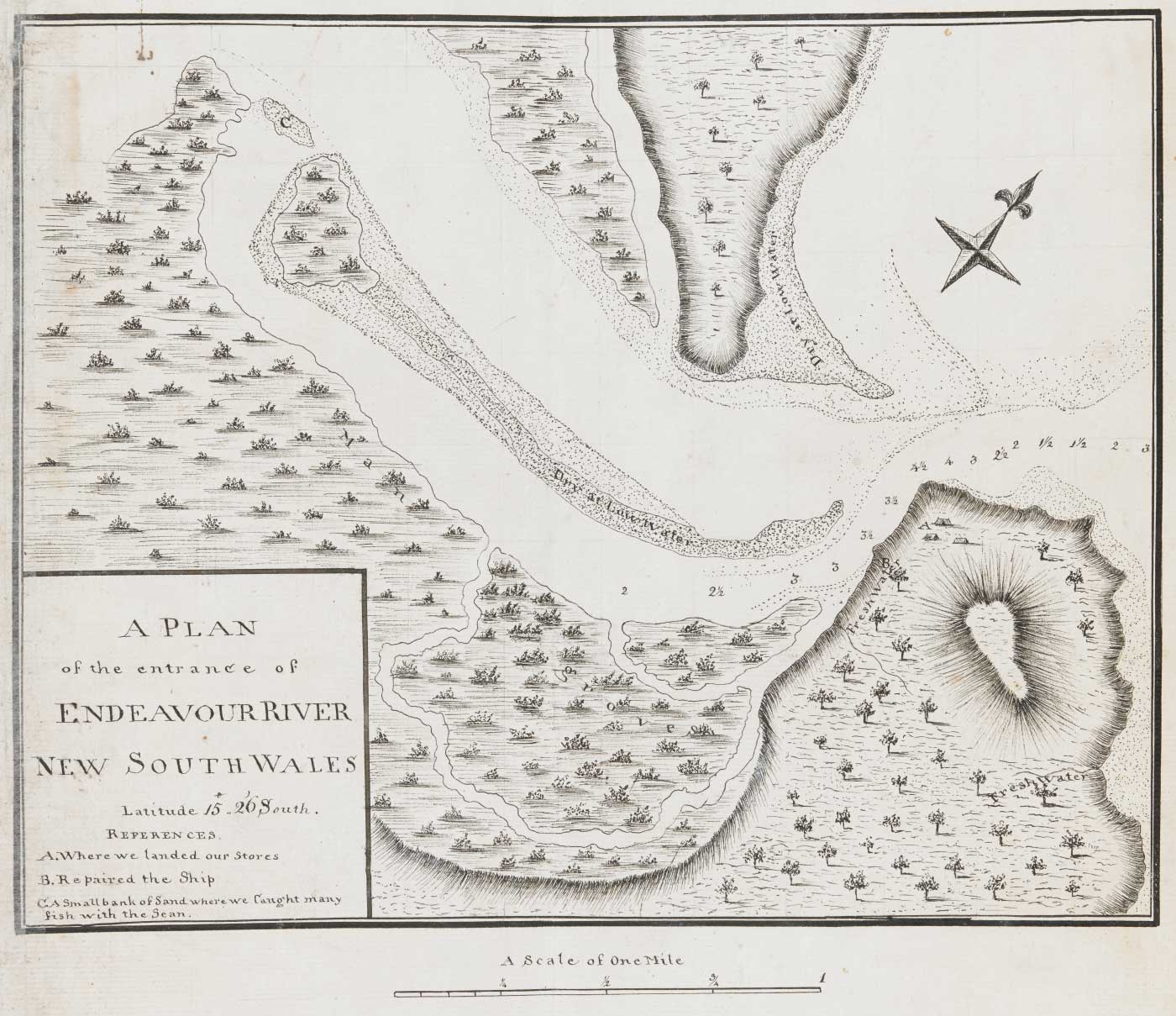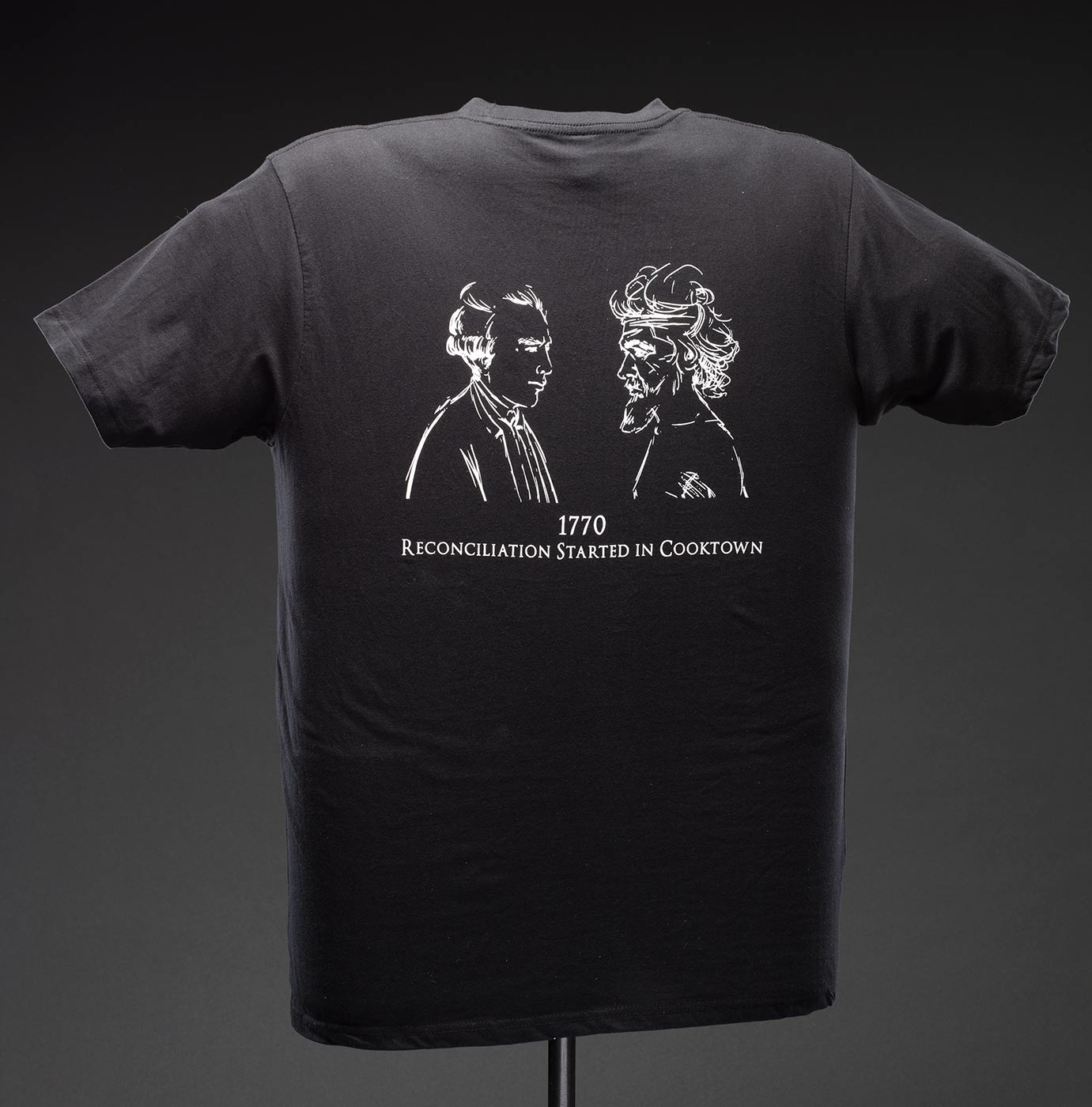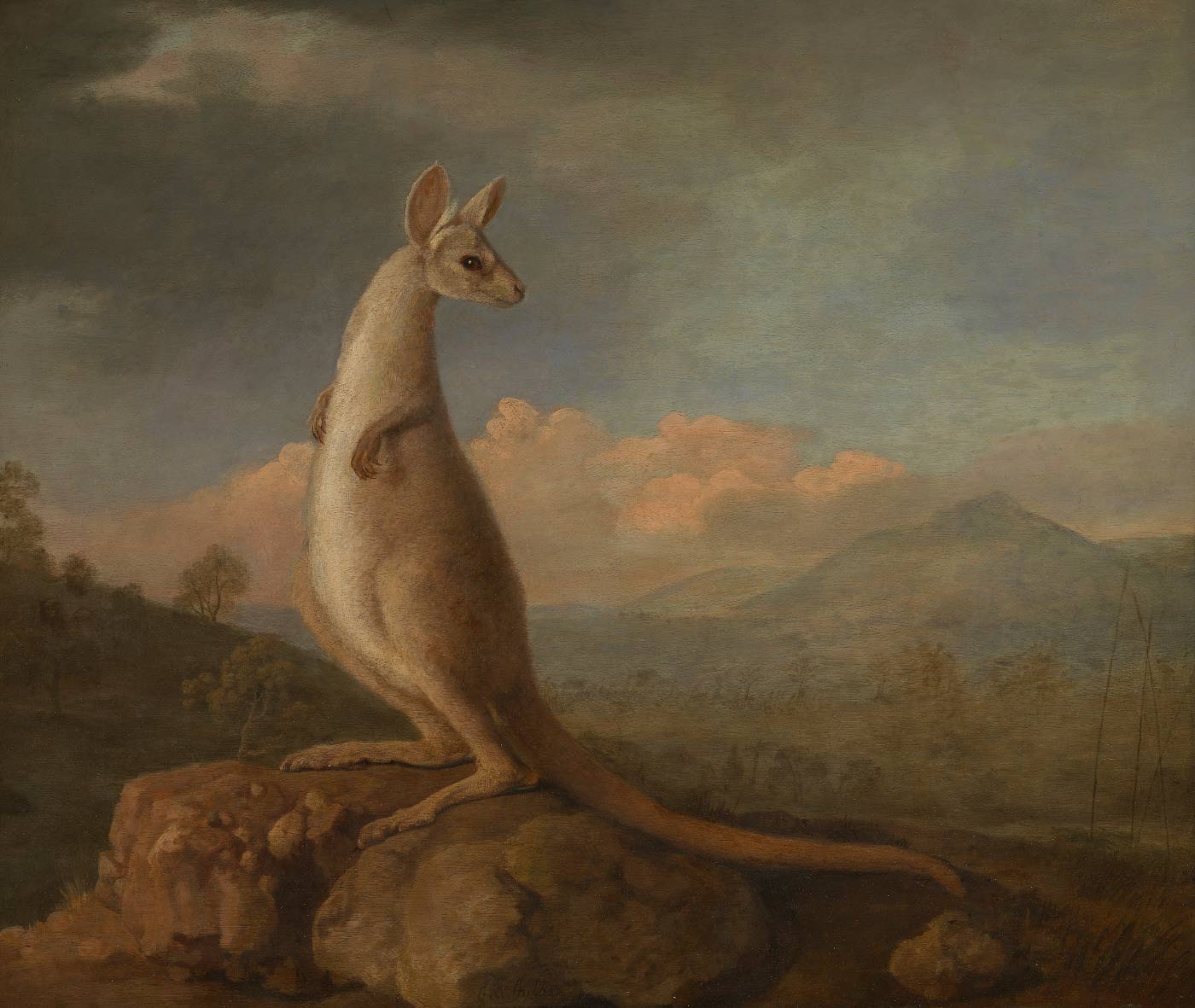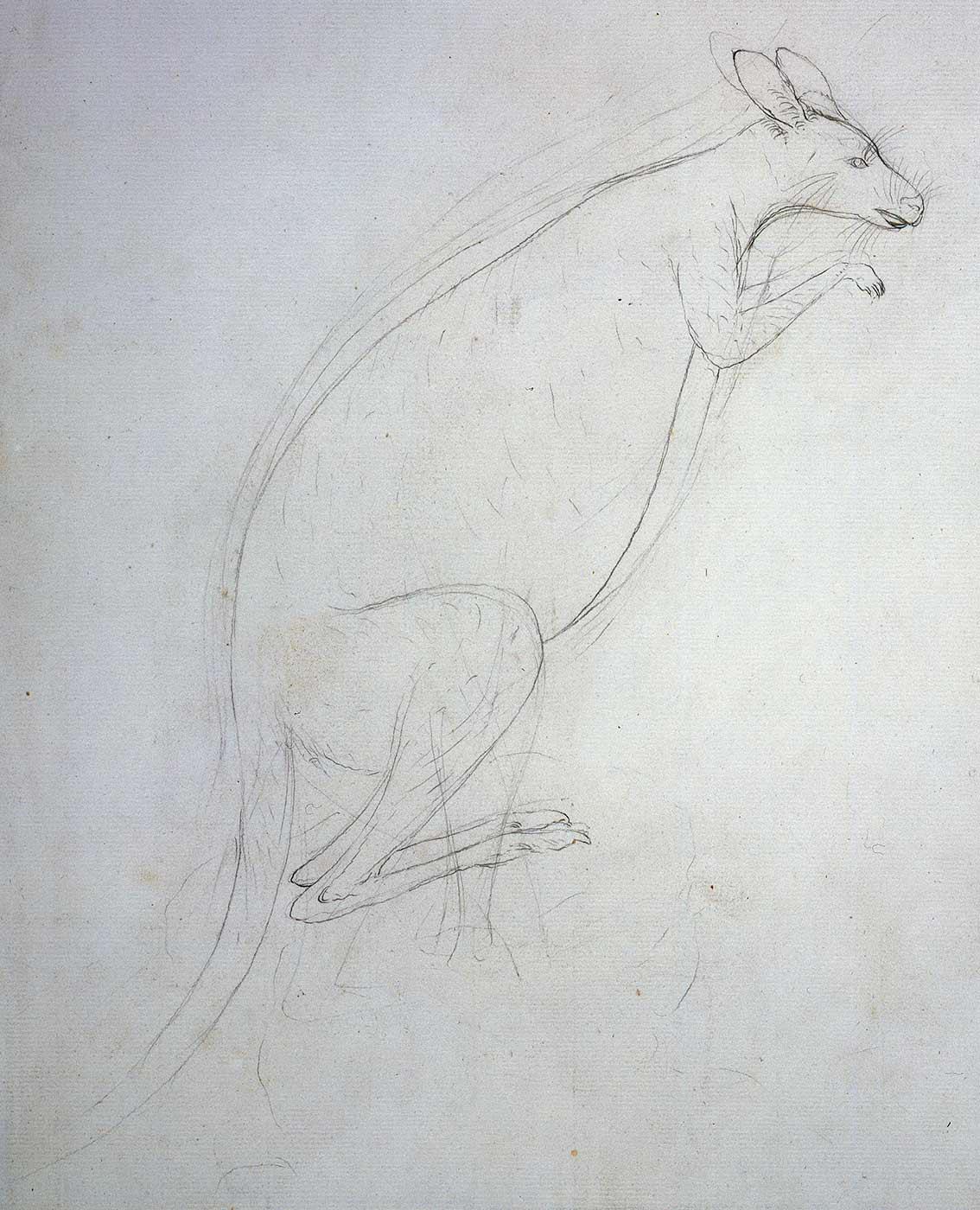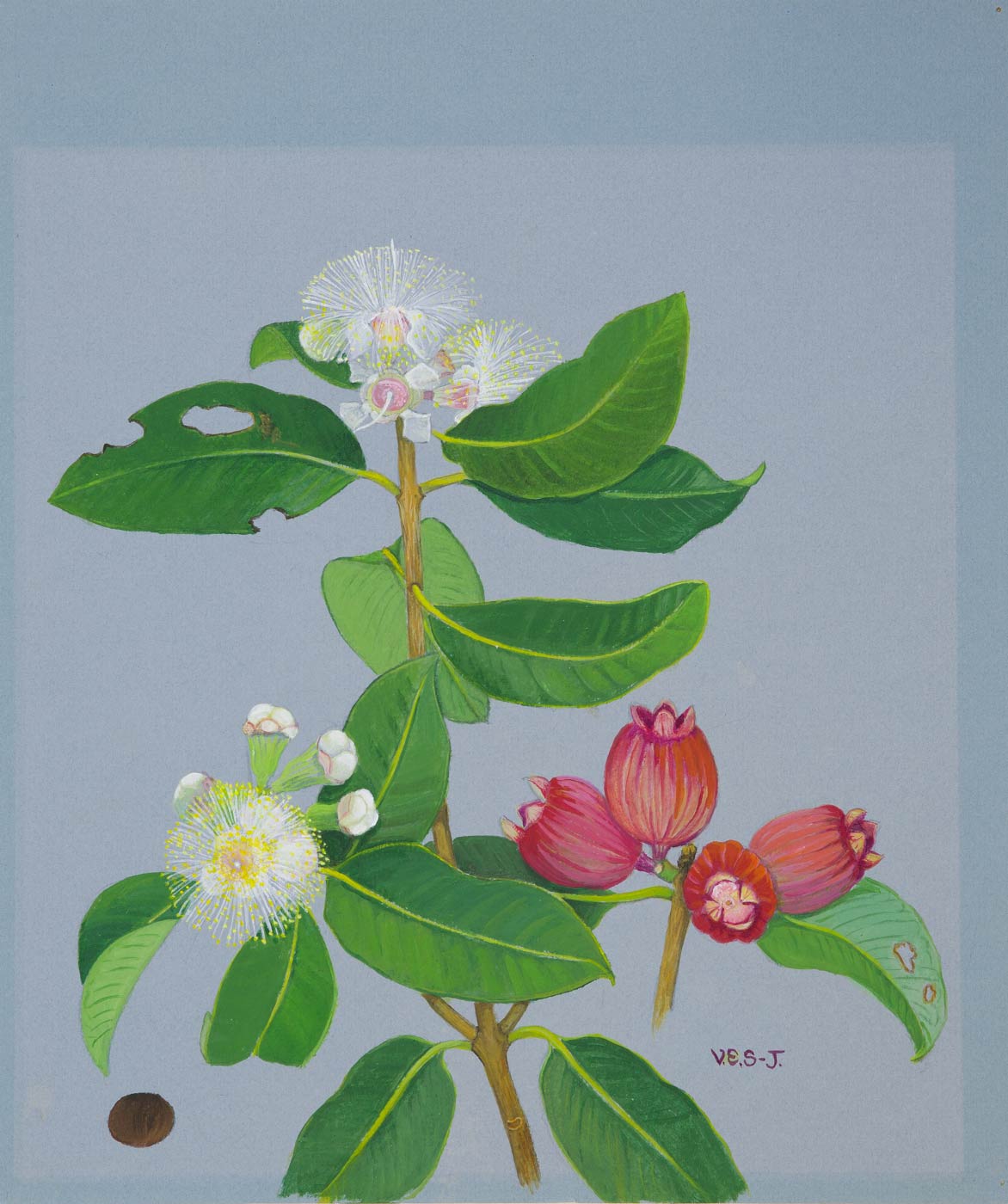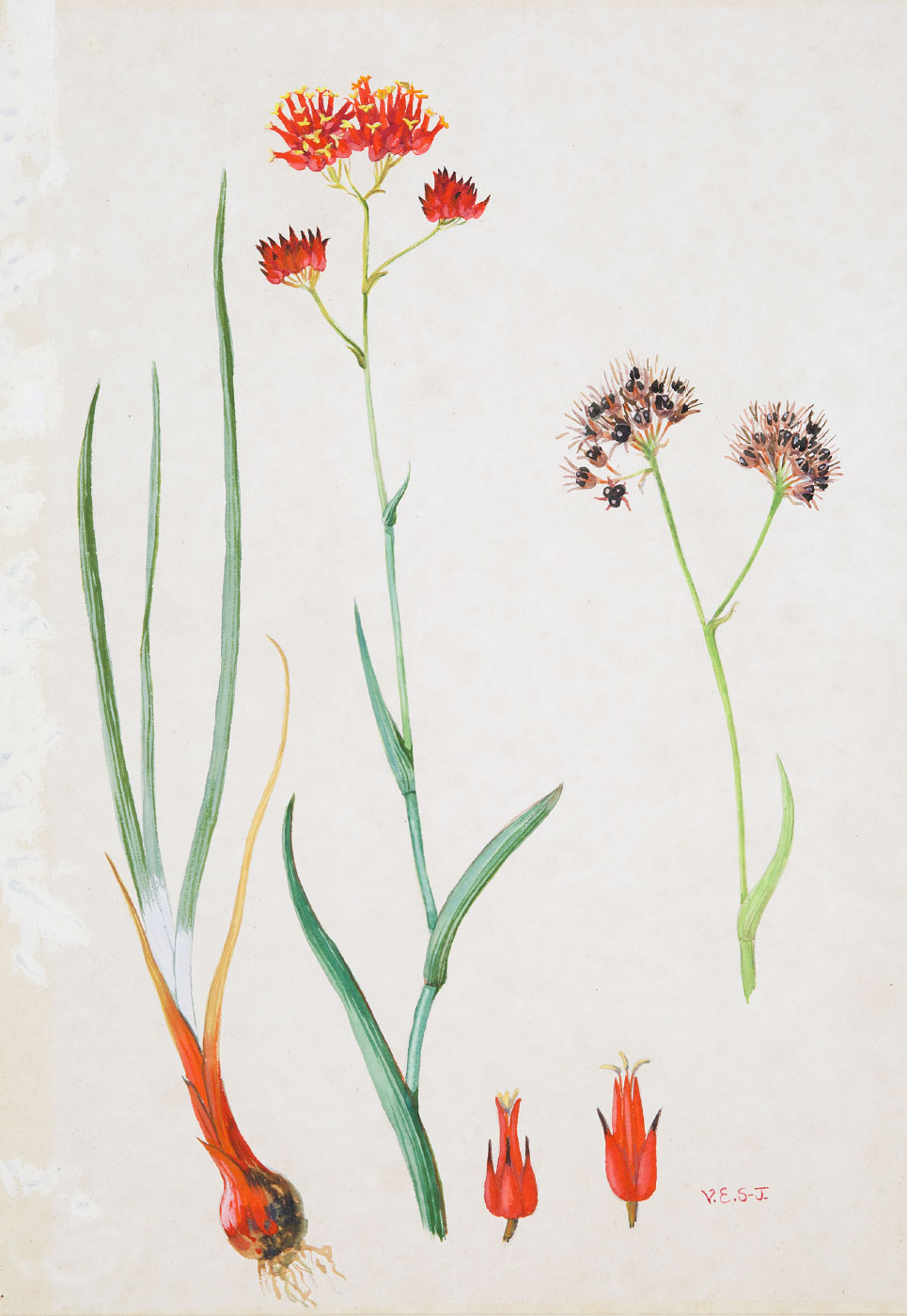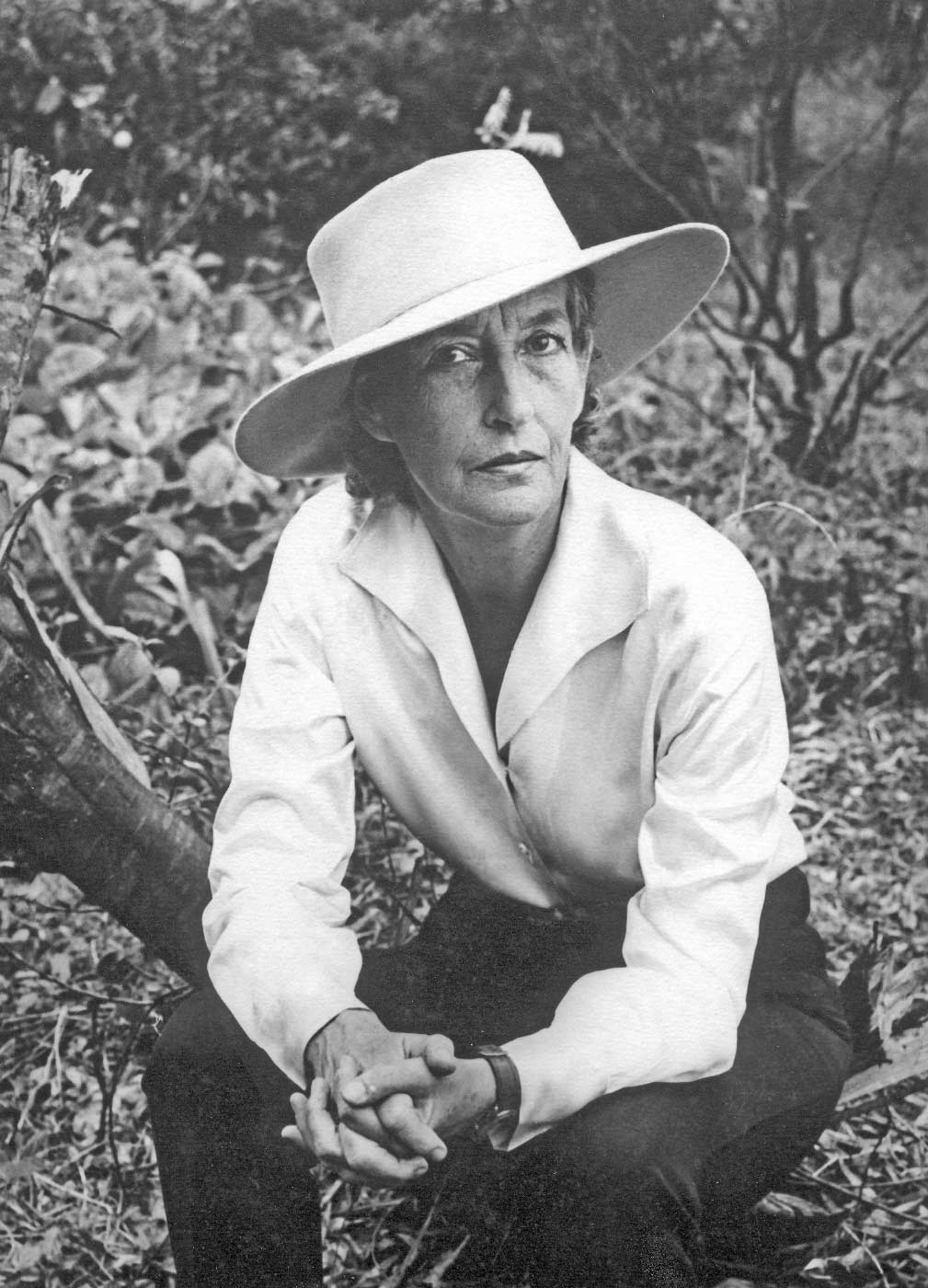15°27’44” South 145°14’59” East
This was a place of refuge for the Endeavour’s crew. For Guugu Yimidhirr and Kuku Yalandji peoples it is where their ancestors encountered Cook. They tell a story of rule-breaking and blood being spilt, of reaching out and reconciliation.
Strangers in country
The Endeavour’s crew spent 48 days at Waalumbaal Birri (Endeavour River) repairing the ship and waiting for the right winds to allow them to sail north. This was their longest stop on the Australian coast.
The damaged Endeavour had limped into Waalumbaal Birri after hitting a coral reef several days earlier. Cook and his crew beached the ship on the river’s south bank at Gan-gaarr in the Waymburr clan lands of the Guugu Yimidhirr people. For local people, this was a safe haven governed by cultural protocols. It was also a place where clan business was negotiated and gan-gaarr (quartz crystals) could be found.
Eric Deeral, Gamay:
Though our bama [people] recognised the predicament these visitors were in, they were discreet because they needed to make sure the visitors were not reincarnations of wawu-ngay, spirits of our ancestors. Every effort was made to be tactful.
Guugu Yimidhirr people describe how Waalumbaal Birri (Endeavour River) was formed by Mungurru the scrub python. Produced by the ABC in partnership with the National Museum of Australia. Image: Mungurru, the Scrub Python, and the Endeavour River, 1979, Thulo Gordon, Nugal. Australian Institute of Aboriginal and Torres Strait Islander Studies. View transcript
Impressions of people
Cook, Banks and Parkinson all described Guugu Yimidhirr people in their journals. With no common language, they focused on what people looked like and the things they wore.
Joseph Banks, 12 July 1770:
They Painted themselves with white and red. Their ornaments were few: necklaces prettyly enough made of shells, bracelets wore round the upper part of their arms … and the preposterous bone in their noses.
Talkin’ Guugu Yimidhirr game
Did you know you are speaking a Guugu Yimidhirr word when you say ‘kangaroo’? Put your memory and language skills to the test with this fun game!
Play the gameReconciliation started here
Each year, the Cooktown community and tourists from across Australia come together to mark the anniversary of the Endeavour voyage. The festivities are a major event in the region. They feature a celebration of Indigenous culture and an annual re-enactment of Cook's landing and interactions with the Guugu Yimidhirr people in 1770.
Local kids prepare for the main event at the 2018 Cooktown Discovery Festival — the Sunset Warrama (corroboree). The performance includes dance, song, lights and storytelling. Guugu Yimidhirr culture is brought to life through the sharing of stories passed down through generations. One of these is the story of the dhiliibulluu, a ghost who has long arms to reach out and grab small children. Note: this video has no sound.
Shane Gibson, Thuppi:
We need to share our story of the first reconciliation act that happened on this ground.
Gangurru — kangaroo
Sydney Parkinson drew two sketches of ‘kanguru’ while at Waalumbaal Birri. Gangurru is the word in Guugu Yimidhirr.
Joseph Banks, 14 July 1770:
They are the first European drawings made of this ‘leaping quadruped’. It bears no sort of resemblance to any European animal I ever saw.
Banks returned to England with a skull and skin of a kangaroo that he had collected at Waalumbaal Birri. The animal was most likely shot by John Gore, the Endeavour’s third-in-command.
Through children’s eyes
Cooktown State School students created a series of artworks in response to Cook's time at Waalumbaal Birri.
See the worksGamba Gamba weavers
Wanda Gibson, Nugal:
I used to watch my mother-in-law and my aunty do weaving when I was growing up. I used to sit down and make them cups of tea and watch them do it. Many years later I joined the people down at the old [Hopevale] Art Centre. I began to remember all the old things that I used to watch my mother-in-law and aunty weave.
People from this region have a long tradition of weaving. The Gamba Gamba group meets regularly to create art at the Hopevale Arts and Culture Centre, north of Cooktown.
A fine collaboration
Botanist Vera Scarth-Johnson moved to Cooktown in 1972. Inspired by the work of Joseph Banks, she set about describing and illustrating the species he had collected in the area. She worked with local elders Thulo Gordon and Eric Deeral to include Indigenous knowledge about the plants.
Education resources
These resources cater for students in Years 3 to 6 and all activities align with the Australian Curriculum. Years 3 and 4 align with the history content and Years 3 to 6 align with the cross-curriculum priority of Aboriginal and Torres Strait Islander Histories and Cultures.
Main banner image: Luminous Reef (detail), Esmae Bowen, Gugu Thaypan. Hopevale Arts and Culture Centre
